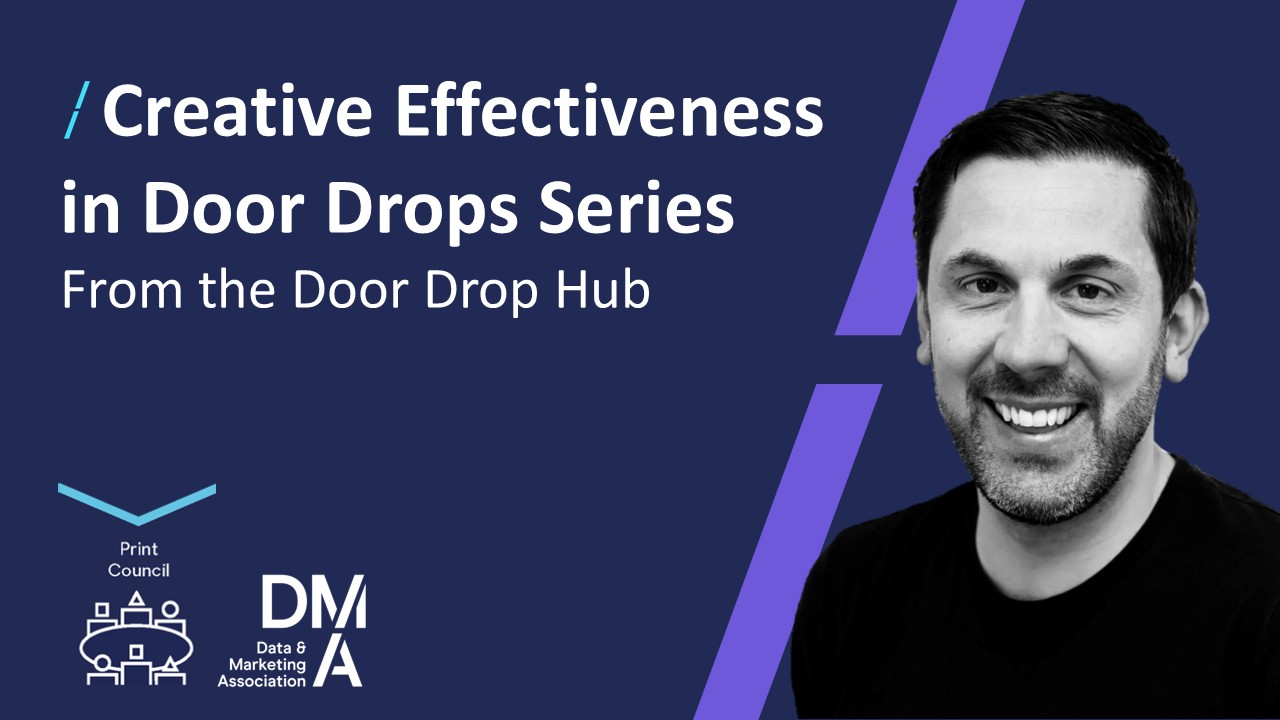Direct Marketing 4.0: Breaking silos - a revolutionary new era for a long-standing discipline
06 Dec 2017

Direct Marketing is a highly effective discipline for the digital age, but often it’s weighed down by a perception that it belongs to an earlier era of mail and catalogues.
From DM’s origins of direct selling in the wild west, we fast forward to today and see how digital advertising is allowing brands to sell direct to consumers. In a way, all digital marketers are becoming direct marketers.
However, digital tactics currently lack discipline. The industry is attribution-obsessed and fraught with measurement issues, where the last click wins and no one is sure whether ads are being seen by human beings or bots. It’s causing seismic shifts in the industry. During the most recent Advertising Week in New York, data powerhouse Nielsen announced its acquisition of multi-touch attribution specialist and marketing analytics company, Visual IQ. The combined skills of data, analytics and marketing effectiveness will enable a clearer view of return on investment for advertisers.
Such consolidation signals a need for collision between disciplines. The combination of digital and direct marketing is where the new era of DM lives. Direct lends depth, discipline and rigour to digital’s fun and games, and digital adds the reach, personalisation and real-time approach to direct.
Consumers are feeling the effect of bad marketing. They’re annoyed by intrusive and irrelevant ads, and even more so with being stalked by retargeted products across digital environments. Campaigns are not only wasting money, but turning off consumers and damaging the brand at the same time. Consumers are demonstrating their dissatisfaction with this one-dimensional approach to marketing by increasingly adopting ad blockers and opting out of cookies. The irritation that this activity has caused has driven legislators to examine online privacy and tighten laws with GDPR.
It’s collaboration, not disconnected silos, that will solve these issues, make effective use of tight marketing budgets, engage consumers rather than annoy then, and drive sales. Now is the time for DM 4.0.
Why silos cannibalise marketing and waste budget
The Wild West days are over for DM. If direct marketing was defined in digital today, it would not be another silo, in an endless list of existing ones that only serve to confuse the sales funnel. The discipline is rooted in the right message, to the right person, at the right time, but new channels have opened up to allow that to be achieved at scale – in an automated and intelligent way.
However, DM is being squeezed. From social media, programmatic and influencer marketing to content marketing and trigger-based communications, all tactics sit in different budget streams held by PR, digital, retargeting, content and direct response managers.
Different disciplines are spending money to achieve different goals. Brands are treating a customer like a new customer every time they talk to them, rather than recognising the existing relationship. It wastes a huge amount of marketing budget, doesn’t address digital advertising issues, and effectively cannibalises any, if not all, marketing efforts.
Email is not connected to a digital campaign, in-store activity doesn’t match the online experience, the attribution of the sale leans towards last click - not always the true source of the lead - so measuring effectiveness is nigh-on impossible when working so disparately.
The reality is that all of these channels offer the ability to directly reach and influence consumers. A joined-up, disciplined approach to direct communications should be the industry’s collective goal, to benefit both consumers and brands.
This joined up approach involves a move back to customer-based marketing, not just channel-based planning. It’s about running tactical, channel-based campaigns but being in sync with a consumer, across every brand touch-point. This requires not only a single view of a customer, but an understanding of the content people engage in and the content they are seeking. Combined with audience data, this ensures brands can communicate with their most valuable consumers, at the point in time where their products and services are most pertinent.
How predicting customer motivations leads to sales
DM 4.0 is a joined-up, consumer-centric version of attribution that stretches beyond channels, and cost-per-click and cost-per-acquisition metrics. It discovers and predicts key motivations across the consumer journey and connects this with profitable outcomes.
Not only does it nearly cut in half the investment in the bottom of the funnel, where brands are all fighting for the same conversion, it also grows market size by creating demand further up the funnel. This allows brands to escape the tyranny of last click, and the associated cannibalisation of selling to customers who would have bought anyway, or in the case of mindless retargeting, have already bought.
The model can predict the value of every available message, in real-time, allowing brands to buy exposures, rather than buying impressions that will never generate a positive outcome or profit.
Luxury holiday brand Mr & Mrs Smith, achieved a 30% uplift in revenue using this approach, with an approach that connected content, email, customer service, press and direct marketing.
The brand had a complex infrastructure and numerous pieces of technology to collect data, but was unable to use it effectively. We collated the data, analysed consumer pathways to attribute all activity, and - using machine learning and AI - were able to create planning tools based on predicted behaviour. The brand now has the ability to understand which content is creating intent and the messaging that delivers sales.
Stop making assumptions and beat the competition
DM 4.0 is a way of working where creativity is still important but it’s driven by insight and data, rather than assumptions. The concept is the same but the execution is different. It takes budget that might have been wasted on targeting the wrong consumers, and reinvests it in content that inspires people to engage with your brand. It does that earlier than the competition can reach them. That inspirational content exists, but it’s only when you marry it with other data sources that you can start to see how consumer behaviour is an indicator of a potential sale.
The Wild West days are over, and it’s time for brands to capitalise on the gold rush that is direct marketing in a digital world.





Please login to comment.
Comments